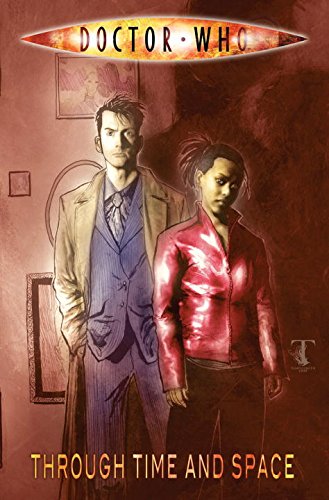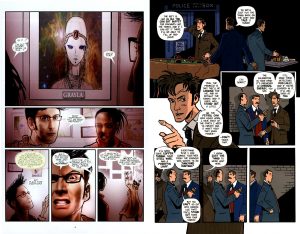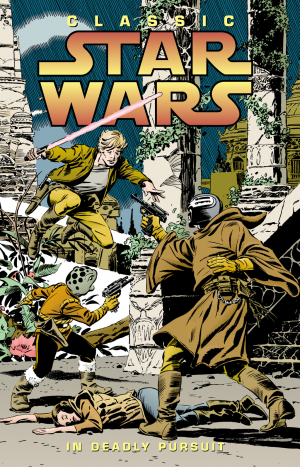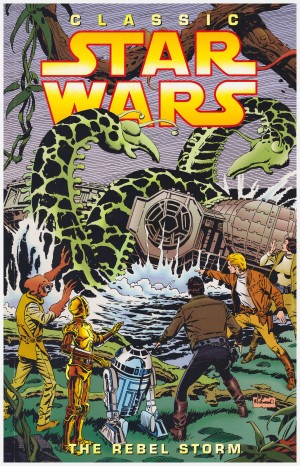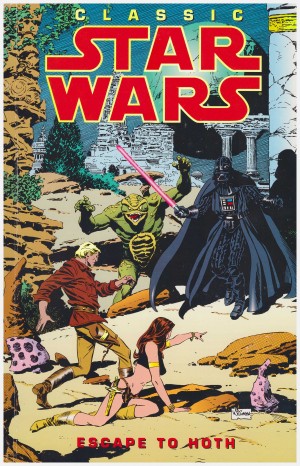Review by Ian Keogh
Through Time and Space is a deliberately vague title for stories provided by six different creative teams and all featuring the tenth Doctor (David Tennant version to those not counting). All the writers convey the distinctive personality Tennant created, enabling you to hear his voice as the dialogue is read. There’s a good balance of stories set in the past and those in alien locations, with some using concepts and creations from the TV show, and others creating their own lore. The quality, however, is more uneven.
Ben Templesmith’s form of abstraction illustrating Doctor Who (sample art left) works far better than might be expected, although every now and then the visual reference is obvious. It’s a fine match with the best story in the collection, dealing with the suppression of all emotion. Leah Moore and John Reppion’s plot is a neat twist on the Spock model, and is clever for inducing sympathy for the lack of it in their scenario.
John Ostrander’s plot for ‘Autopia’ ponders the well used science fiction conundrum of when artificial intelligence becomes sentient life, given an intelligent twist. Perhaps Kelly Yates had more time to produce his pages, because they’re stronger than his Doctor Who work elsewhere.
The only out and out cartooning is provided by Paul Grist on Tony Lee’s story of the Doctor revisiting H.G. Wells. It’s a neat play on not just the experiences of the Tennant version of the Doctor, but provides brief cameos for two other Doctors besides. Grist’s pages differ from anyone else’s (sample art right), but are very good as he captures likenesses and movement.
‘Cold Blooded War’ by Gary Russell, Richard Starkings and Adrian Salmon attempts to pack too much plot into a 21 page story, requiring an enormous amount of front-ended exposition. It’s a rather muddied condemnation of anyone who’d suppress the rights of another, prompted when a woman becomes the Draconian Empress, anathema to traditionalists in the population, working its way to an ending most readers will predict from halfway. Salmon’s art doesn’t help liven the story up in any way.
Rich Johnston’s plot for ‘Just a Theory’ is clever, but not one he’s able to convey very well as it hinges on someone living their life backward in human terms, and what’s presented essentially makes very little sense at all until that final revelation, so the prevailing feeling is confusion. Eric J takes the time with his likenesses, but his art has rough edges otherwise.
Charlie Kirchoff and Tom Mandrake supply the final story ‘Black Death, White Life’, set in Earth’s middle ages during a new outbreak of the plague. There are people other than the Doctor who can help, and Kirchoff’s plot moves in an unexpected direction, with Mandrake good on likenesses with his impressionistic art.
By the end of the collection there’s been a fair amount of variety, but only ‘The Whispering Gallery’ is compelling. You could consider just buying that as a back issue comic, or alternatively, if in the UK this was part of volume two of Titan Books’ The Tenth Doctor: Doctor Who Archives series along with Fugitive.
